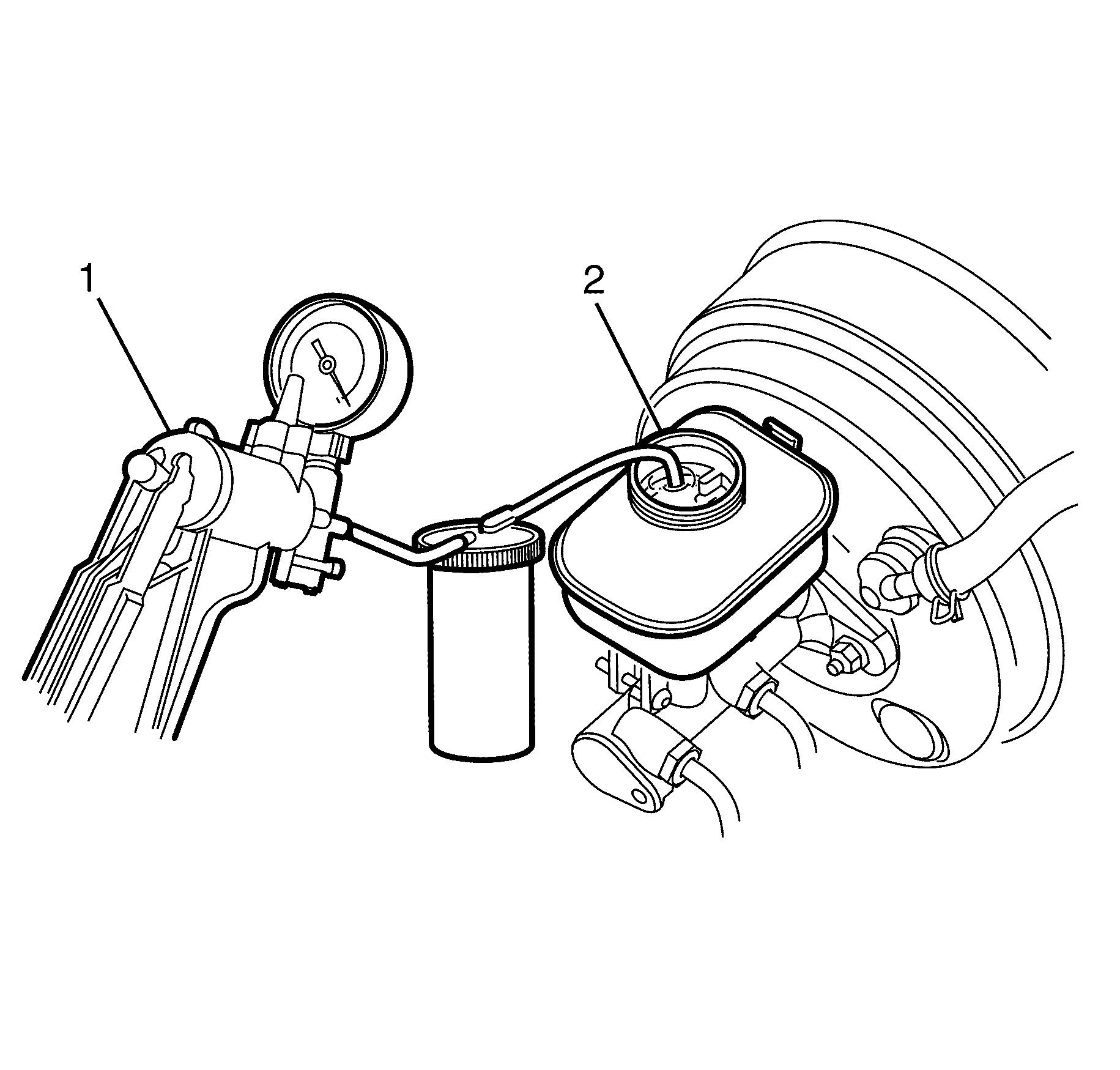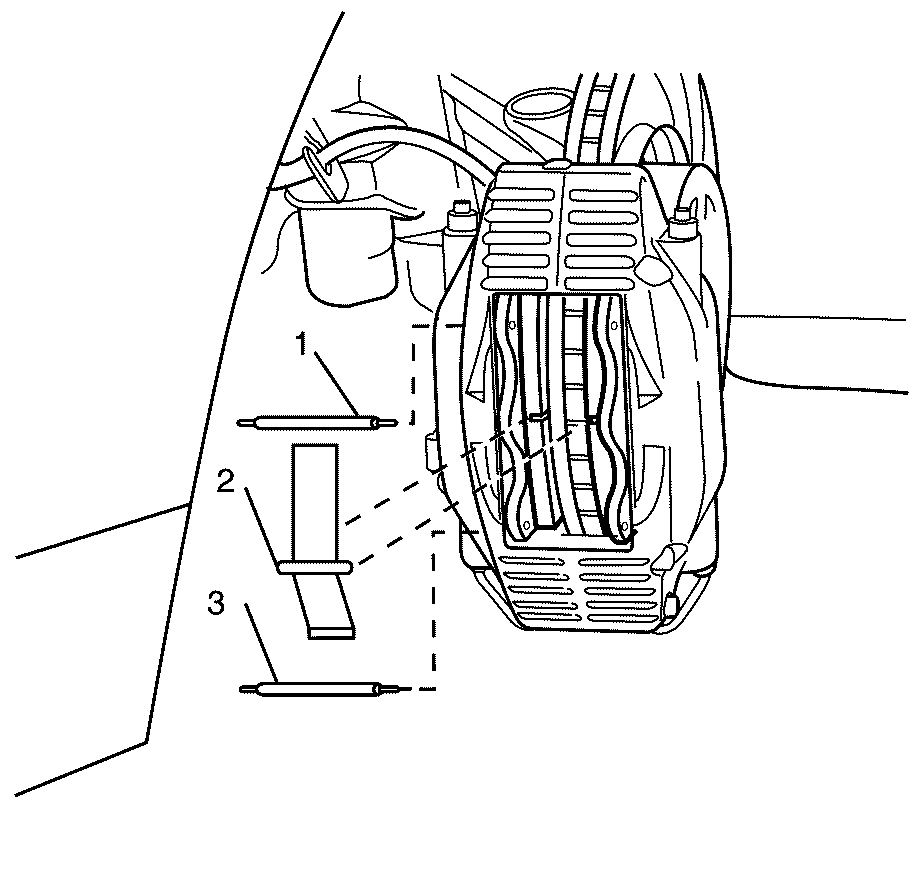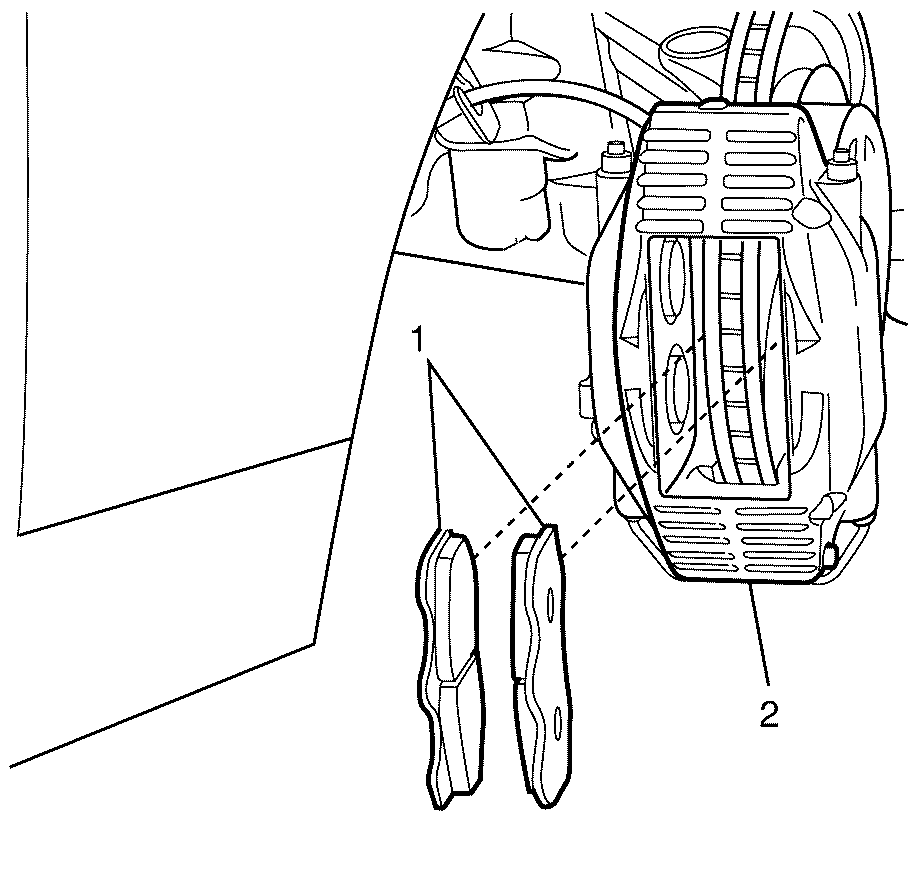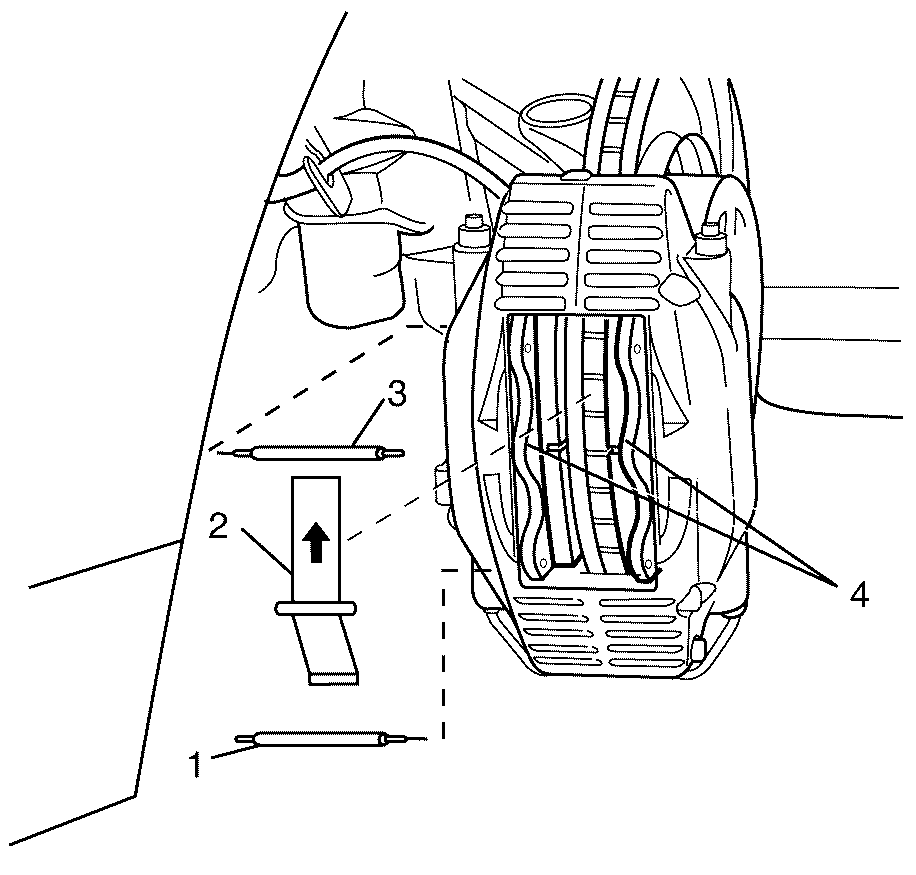Front Disc Brake Pads Replacement CSV HSV VXR8
Removal Procedure
Tools Required
J 23738-A Hand Vacuum Pump.
- Inspect the fluid level in the master cylinder reservoir (2).
- Raise and support the vehicle. Refer to Lifting and Jacking the Vehicle.
- Remove the front wheels. Refer to Tire and Wheel Removal and Installation.
- Use a suitable tool to remove the upper retaining pin (1), lower retaining pin (3) and anti-rattle clip (2) from the brake caliper.
- Remove the brake pads (1) from the brake caliper (2).
- Clean the contact surfaces of the brake caliper pistons with denatured alcohol before pushing the pistons fully back into the brake caliper.
Caution: Refer to Safety Glasses Caution in the Preface section.
Caution: Refer to Vehicle Lifting Caution in the Preface section.
Caution: Refer to Brake Fluid Caution in the Preface section.
Caution: Refer to Brake Dust Caution in the Preface section.
Caution: Refer to Brake Fluid Irritant Caution in the Preface section.
Notice: Refer to Adding Fluid to the Brake System Notice in the Preface section.
Notice: Refer to Brake Fluid Effects on Paint and Electrical Components Notice in the Preface section.
Important: DO NOT completely empty the master cylinder reservoir (2) or remove any brake lines otherwise complete bleeding of the braking system will be necessary.

| • | If the brake fluid level is midway between the maximum fill level and the minimum allowable level, no brake fluid needs to be removed from the master cylinder reservoir (2) before proceeding. |
| Important: DO NOT re-use the removed fluid. |
| • | If the brake fluid level is higher than midway between the maximum fill level and the minimum allowable level, syphon the brake fluid to the midway point using a hand vacuum pump (1) before proceeding. |
Important: Brake pads should always be replaced in axle sets.


Installation Procedure
- Clean the piston to brake pad contact faces as required.
- Install the brake pads (1) into the brake caliper (2) against the caliper pistons.
- Install the lower retaining pin (1) into the caliper body through both brake pads (4).
- Install the anti-rattle clip (2) behind the lower retaining pin (1).
- While bending the anti-rattle clip (2) inwards, install the upper retaining pin (3) into the caliper body and through both brake pads (4).
- Install the front wheels. Refer to Tire and Wheel Removal and Installation.
- Lower the vehicle to the ground.
- With the Ignition Off, gradually apply the brake pedal approximately 2/3 of its travel distance.
- Slowly release the brake pedal.
- Repeat steps 10 and 11 until a firm brake pedal application is obtained. This will correctly seat the brake caliper pistons and brake pads.
- Fill the master cylinder reservoir to the correct level. Refer to Master Cylinder Reservoir Filling.
- Burnish (bed in) the brake pads and brake rotors. Refer to Brake Pad and Rotor Burnishing.
Caution: Refer to Safety Glasses Caution in the Preface section.
Caution: Refer to Vehicle Lifting Caution in the Preface section.
Caution: Refer to Brake Fluid Caution in the Preface section.
Caution: Refer to Brake Dust Caution in the Preface section.
Caution: Refer to Brake Fluid Irritant Caution in the Preface section.
Notice: Refer to Brake Fluid Effects on Paint and Electrical Components Notice in the Preface section.
Notice: When adding fluid to the brake master cylinder reservoir, use only Holden specification number HN 1796 (Super DOT 4/DOT 4 Plus) brake fluid from a clean, sealed brake fluid container. The use of any type of fluid other than the recommended type of brake fluid may cause contamination which may result in damage to the internal rubber seals and/or rubber linings of hydraulic brake system components.
Important: Make sure shims are securely affixed to backing plate of the brake pads.


Important:: Arrow located on anti-rattle clip indicates direction of disc rotation. Make sure correct installation of the anti-rattle clip.
